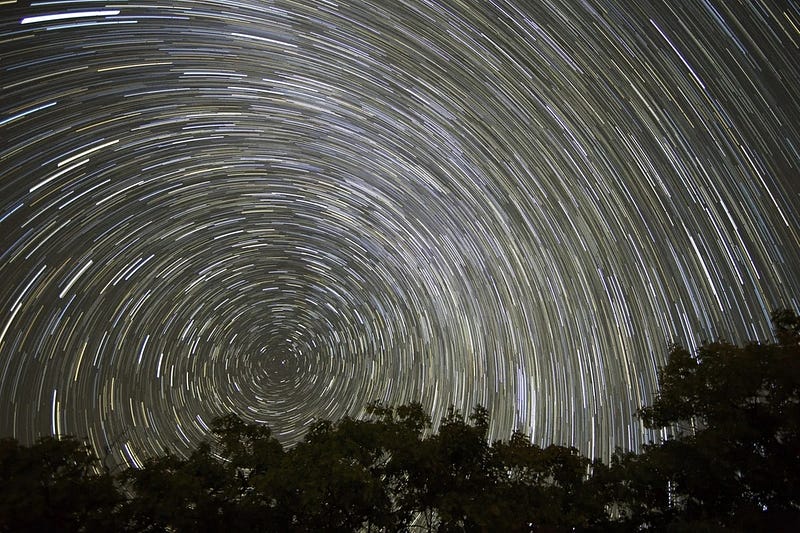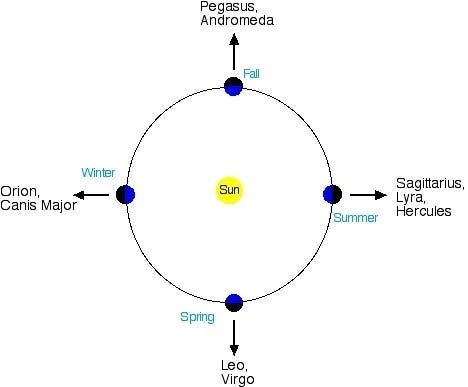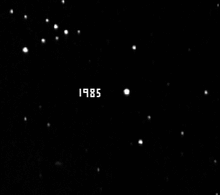Understanding Why the Stars Seem Stationary Despite Earth's Motion
Written on
Chapter 1: The Earth's Rotation and Its Effects
A curious subscriber posed an intriguing question: Why do the stars seem to remain in the same configuration in the night sky, despite the Earth's continuous rotation on its axis, its orbit around the Sun, and its journey as part of the Milky Way galaxy?
When observing the night sky, it's evident that the stars are indeed in motion. As the Earth spins, stars rise and set, creating a dynamic display. This phenomenon is beautifully illustrated in a time-lapse video showing stars traversing the sky over several hours:
The Earth completes a full rotation every 24 hours. Consequently, all stars appear to move in a complete circle in the same timeframe. Since a circle consists of 360 degrees, one can determine that each star shifts approximately 15 degrees every hour (360 / 24), equating to a change of a quarter degree each minute.

Source: lightstalking.com
This gradual movement is challenging to detect with the naked eye. However, capturing a series of images of the night sky at intervals of 30 to 60 minutes can reveal this motion, provided the camera remains stable on a tripod to avoid blurring. With the right shutter speed, the variations in star positions become apparent.

Chapter 2: Seasonal Changes in Star Visibility
As the Earth orbits the Sun, the constellations visible in the night sky shift throughout the year. Certain stars may only be observed during specific seasons, with winter skies showcasing different celestial bodies than those visible in summer.
Moreover, as our solar system spirals around the center of the Milky Way, all stars move along with us, albeit at a relatively slow pace. This slow motion means that while the stars' positions change over thousands of years, these alterations are imperceptible to the naked eye.
However, exceptions exist; some stars exhibit noticeable movement over short periods. For instance, Barnard’s star is one such celestial body that has been observed moving relatively quickly in the night sky. Below is a visual representation of its motion:

The first video titled "Why don't we feel the Earth spinning?" provides an engaging exploration of Earth's rotation and its effects on our perception of the cosmos.
The second video, "Do the stars really move?" delves into the nuances of stellar motion and our understanding of the universe.
If you enjoy articles about space, consider subscribing to our channel for more insights. Feel free to ask your questions, as I'll be addressing them in future articles. Your support through a Medium membership, available for just $5 a month, will help us create even more compelling content.